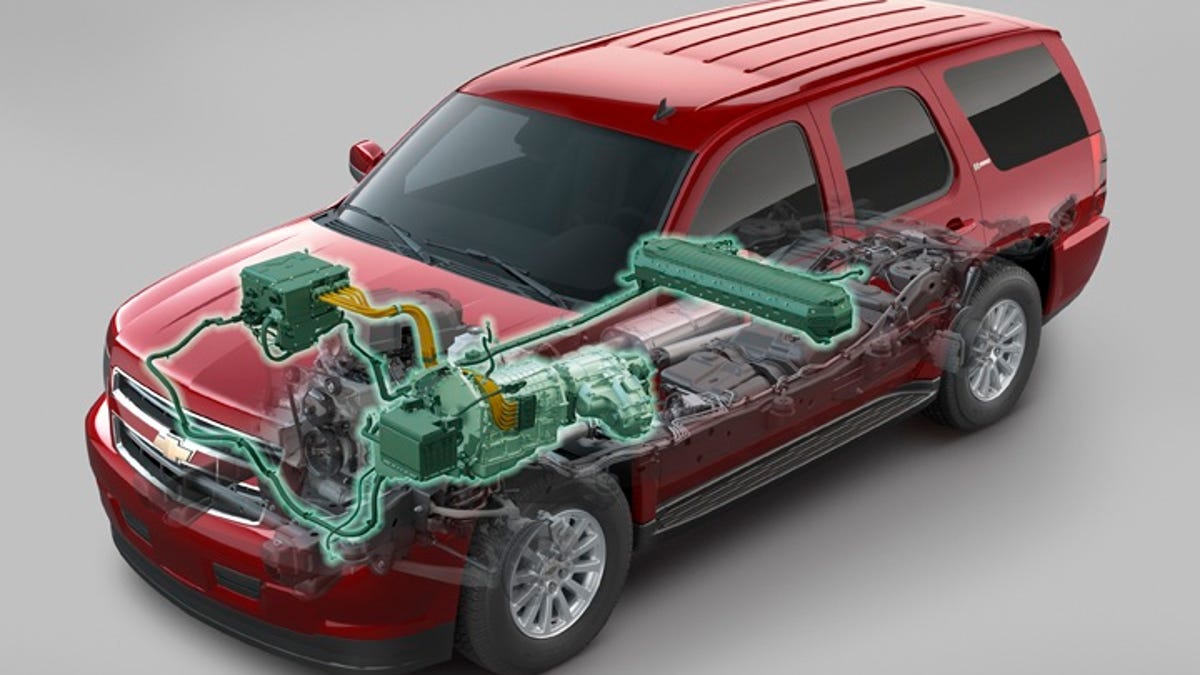Chevy Tahoe, GMC Yukon go hybrid
Hybrid versions of the two full-size SUVs from General Motors are due to hit the market later this year. But are they efficient enough?

General Motors is banking on the increasing demand for fuel-efficient cars by launching hybrid versions of two of its full-size SUVs: the GMC Yukon and the Chevy Tahoe. And although the cars aren't slated to go on sale until this fall, GM is already busy building buzz.
The new models, available in both two- and four-wheel drive, use a "two-mode" powertrain designed jointly by GM with BMW and Daimler-Chrysler. This Hybrid Operating System (HOS) allows the car to operate either on electricity or gasoline, depending on the power needs of the car.
Allocation of electric power versus gasoline power is determined by a combination of factors, including driver input, speed and terrain. GM claims the Tahoe can run with gentle throttle input (that is, no punching down on the gas pedal) up to about 32 miles per hour purely on electric power. If the driver reaches higher speeds, accelerates quickly or starts up a steep grade, the internal combustion V8 engine will kick in to deliver more power. The two-mode system also provides enough juice to tow up to 6,200 pounds.
Like other hybrids, the Tahoe and Yukon use regenerative braking to help recharge the car's 300-volt nickel-metal-hydride battery when the car stops or slows down. Two electric motors power an electronically variable hybrid transmission.
GM hasn't released numbers in any detail yet, but the company claims the new hybrids are 40 percent more fuel-efficient in city driving alone, and 25 percent more fuel-efficient overall than their nonhybrid counterparts. The big discrepancy between city and overall performance is due, in part, to the fact that the car relies more heavily on electric power at slower speeds, and because city driving requires more braking, which charges the battery more often.
While the two-mode system seems to provide ample power, it's hard to believe the typical full-size-SUV owner would use these cars in a manner that would achieve maximum fuel efficiency. Passengers and cargo, as well as towing, affect gas mileage drastically. Even with a light load, fuel efficiency can vary greatly from driver to driver -- lead-footers will see that fuel gauge needle drop much faster.
Even under optimal driving conditions, a mere 25 percent overall improvement in fuel quality is a little disappointing. The 2007 nonhybrid models of the Tahoe and Yukon are rated between 15 and 22 miles per gallon, depending on the trim level. That means, at their best, the new hybrids will perform 3.75 to 5.5 miles per gallon better overall (although GM says city driving alone yields an improvement of 6 miles per gallon).
That said, continued consumer demand for horsepower and a simultaneous increase in environmental awareness must make it incredibly difficult for designers and engineers to strike a balance between fuel efficiency and performance, especially with vehicles this size. With these seemingly conflicting interests in mind, the Tahoe and Yukon do a fair job pleasing some without alienating others. And while GM's hybrid models are a step in the right direction, the reality is, at this point in time, gigantic SUVs still aren't good for the environment.
GM plans to unveil hybrid versions of other cars and trucks over the next couple of years, including hybrid Saturn and Cadillac models. Could a fuel-efficient Escalade be on its way?